At the current stage of my photographic journey, I enjoy normal prime lenses. When I go on trips, whether it’s with my Nikon F2 or my Canon P, I often find that the 28 or 35mm in my bag would go entirely unused, while the 50mm might as well have been welded on.
That said, with my time in Japan winding down, I wanted to look for just one more artifact from what I consider camera design’s golden age – simple, mechanical, and heavy with hint of art-deco. The Konica IIIA or IIIM, as the company’s final entries in the “1950’s big metal rangefinder” class certainly fit the bill.
I wasn’t particularly concerned about whether to go with the IIIA or the IIIM model – having bought many cameras of the Selenium vintage, I had little to no faith that the meter would work reliably (my record on working selenium meters is 0 out of 7), so it would really just be a case of which I came across first at a good price.
So I was thrilled when the third shop I walked into that day had a wonderful bevy of options – a Konica II, III, and IIIM that all appeared to be in decent shape.
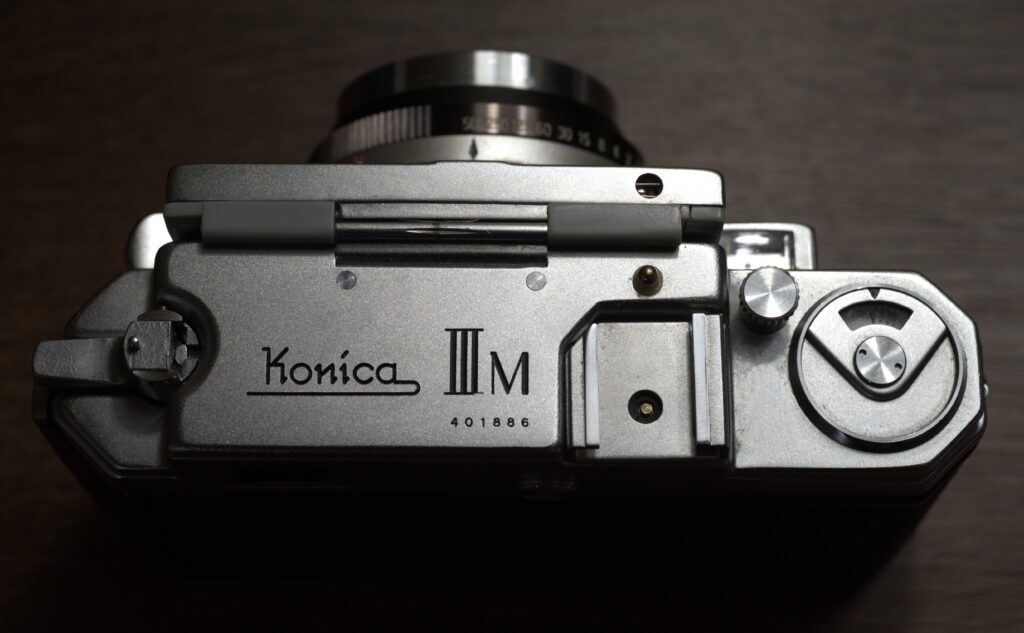
After picking up and trying them all – the common trend is that they are reassuringly solid, but the IIIM was a clear step up over prior entries in one key respect – the rangefinder. It’s bright, large, and at 1.0 magnification, seamless when brought to the eye. While the baselength for the rangefinder is not huge, the Konica IIIA/M are in the very rare 1:1 magnification class, making them comparatively easy and accurate to focus.
But what about the big point of differentiation between the IIIM and the IIIA? The eponymous “M” stands for meter – a bar of selenium cells that folds down over the rangefinder when not in use.
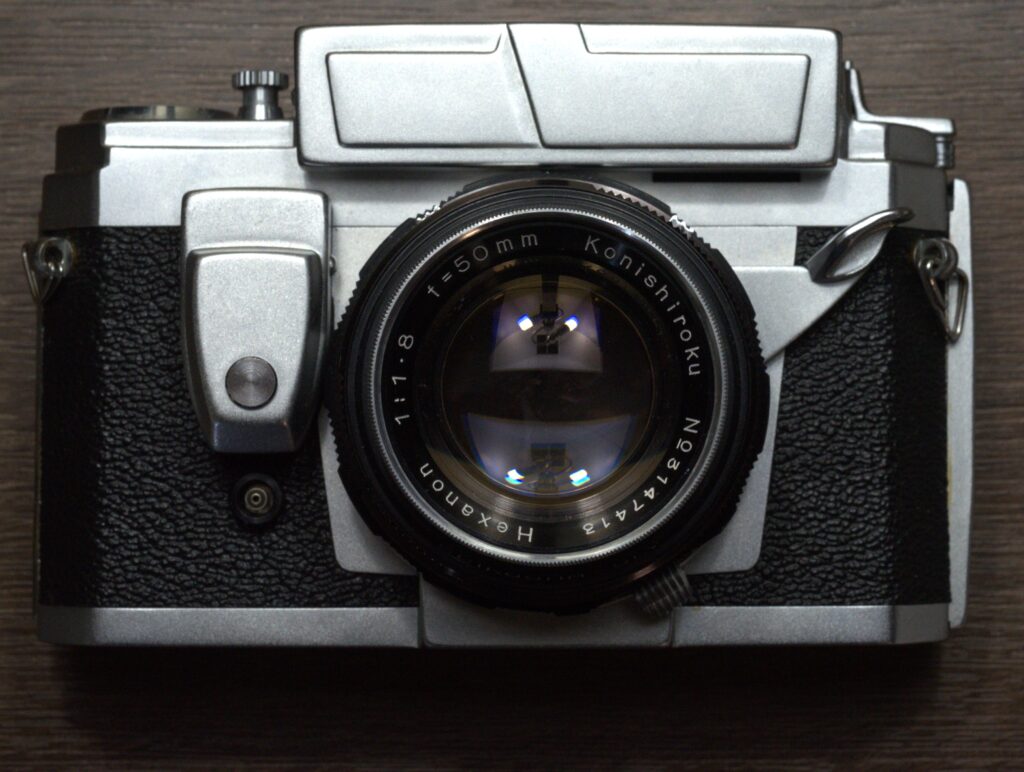
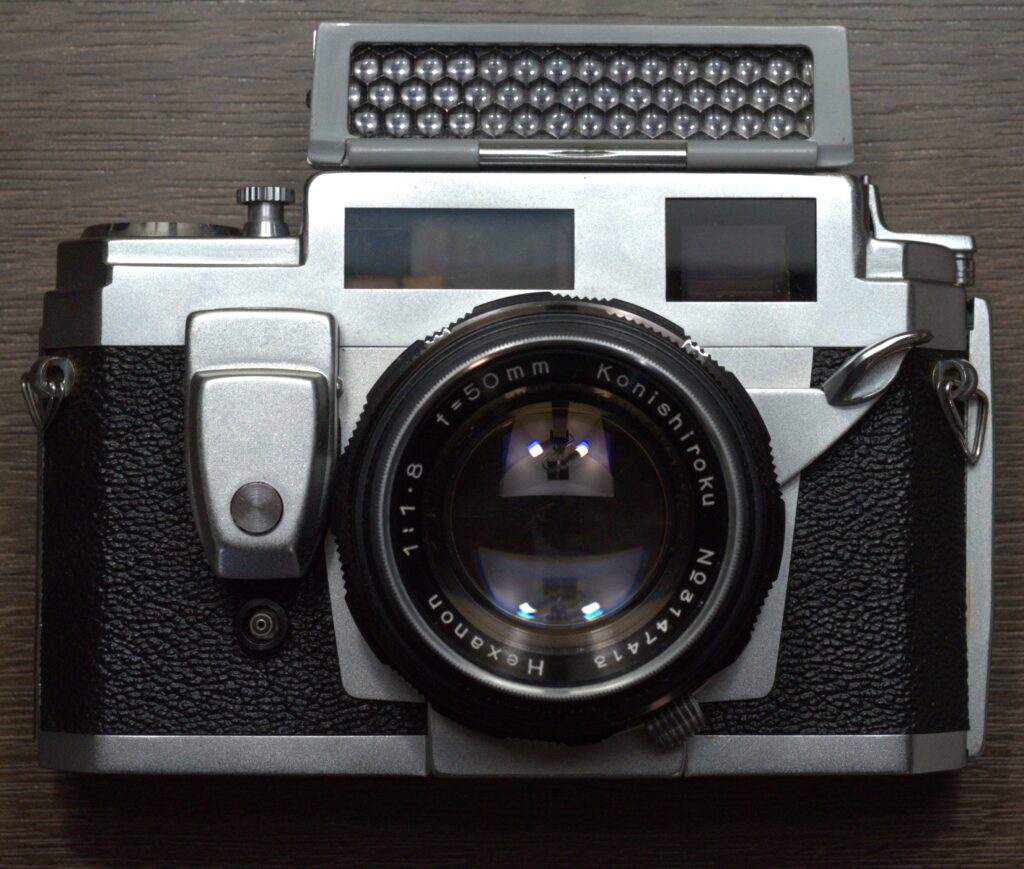 The selenium meter itself is so wonderfully simple in concept – as I understand it, light excites the selenium atoms, generating a very slight current. This current runs across the metal stud that protrudes from the body (best seen in the photo of the top plate above).
The selenium meter itself is so wonderfully simple in concept – as I understand it, light excites the selenium atoms, generating a very slight current. This current runs across the metal stud that protrudes from the body (best seen in the photo of the top plate above).
The amount of current corresponds to the amount of light, which is conveyed to the meter needle on the body, visible when looking from above:
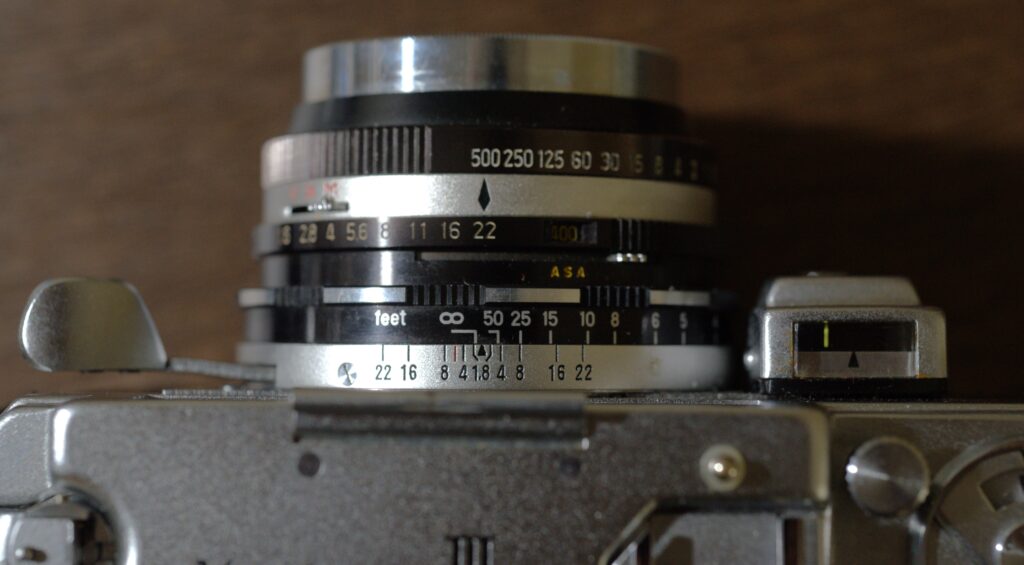
The photographer’s shutter/aperture settings made on the lens add or remove resistance from the body’s metering circuit, which is calibrated to register optimum exposure at the center of the needle’s arc.
This is a delightfully simple system, but unfortunately it is more than half a century old at this point. I compared the built-in meter reading with my phone and my Hedeco Lime II and my suspicions were confirmed – except in bright sunlight, the selenium meter wasn’t sensitive enough. I tried compensating by raising the ISO setting to its maximum (400) but the needle was still reading too little exposure and consistency was hard to come by.
In addition to the lack of sensitivity, what I quickly realized during my following photo-walk was that the flip-up meter is a bit cumbersome for how I like to shoot. I have become very accustomed to using a Hedeco Lime II in the hotshoe – with B&W film I am usually confident enough to meter once and keep settings the same for a block or two, only re-metering when the light changes substantially for subjects in shadow, etc.. This is fine with a hotshoe meter, but the IIIM’s blocks the viewfinder when in stowed position. I also noticed a hairline crack in the selenium meter’s plastic (apparently a common problem after so many years) as the material is stressed from popping the meter into place each time it is employed.
So I decided to remove the pop-up meter.
To those of you who gasped, don’t worry – the flip-up meter’s mechanism is quite ingenious and there is a simple removable pin that I gently tapped out to the side that allows the meter to detach. If my children ever decide to sell off dad’s old camera collection, you all can rest easy that the Konica IIIM will be auctioned off with its meter intact and reattached.
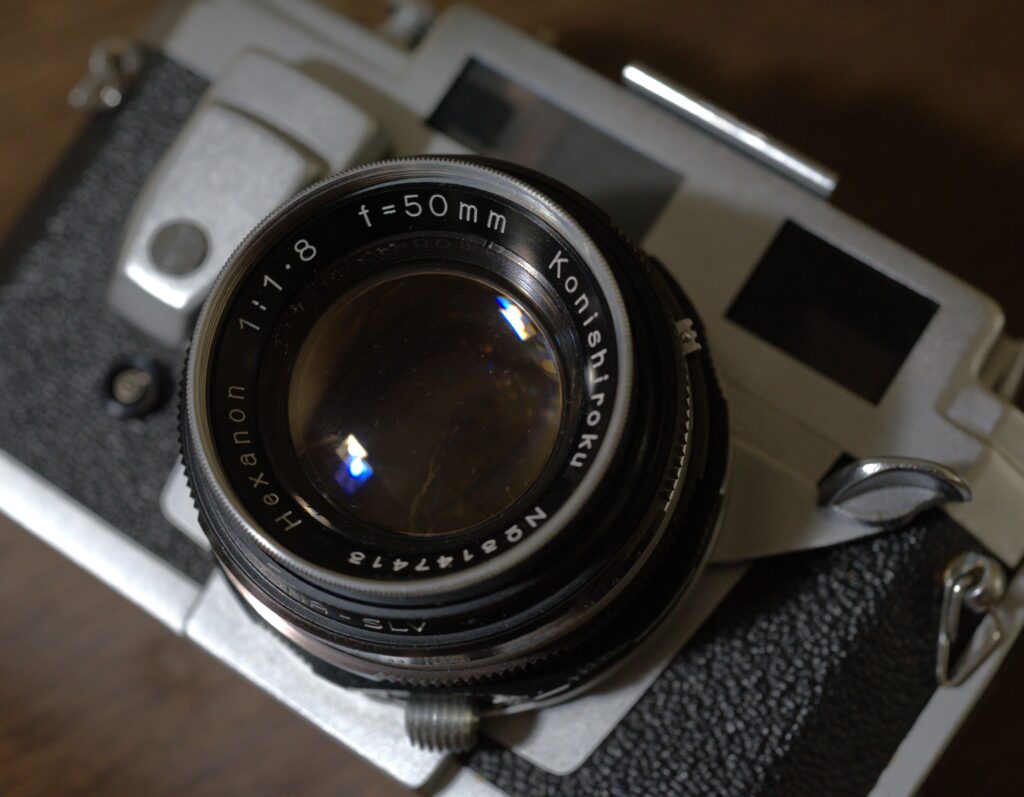
The other quirk of the Konica rangefinders is the location of the film advance lever. They are double stroke like some of the older Leica M3s, but what is more unconventional is the position on the front of the camera. It certainly seems odd now after a century of mechanical engineering and ergonomic dust has settled, but the location of the film advance location wasn’t settled science in the 1950s when the first of the Konica series was first produced.
I mentioned half-frame lines in the finder earlier – this camera is actually capable of switching to half frame at the start of each roll. The double stroke to advance becomes a single – and even the film counter dial counts up to 72. It’s quite impressive. The only problem is that very few examples seem to still have the required half-frame mask.
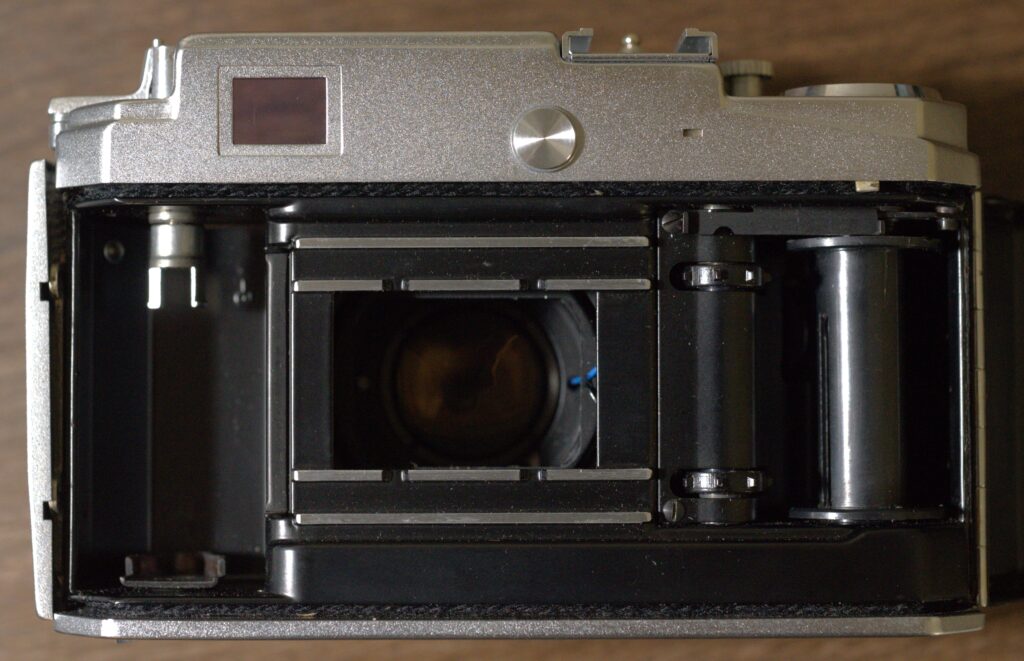
Unfortunately, the half-frame mask that belonged to my IIIM is long lost to time. If Pentax/Ricoh is taking notes, perhaps their next camera could bring this feature back? Imagine if the Pentax 17 had this capability!
So how does the Konica IIIM shoot?
To find out – I popped in a roll of Ilford XP2 and kept the Konica with me on some walk-abouts in Tokyo and Okinawa. I cross-processed in D-76 and these are my results:
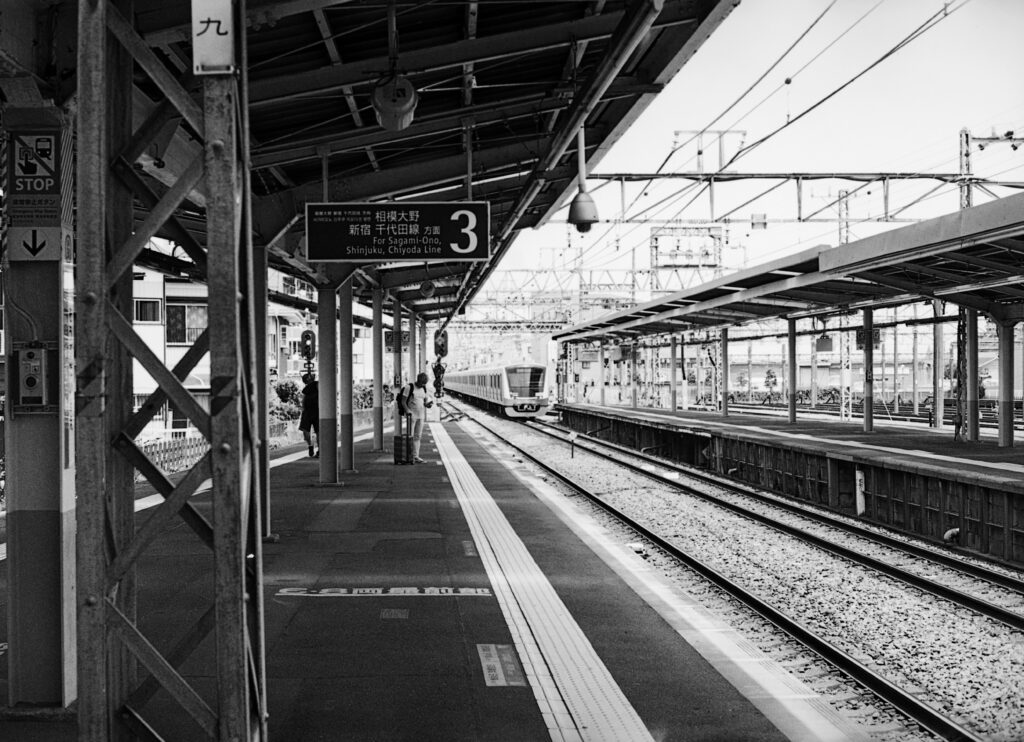
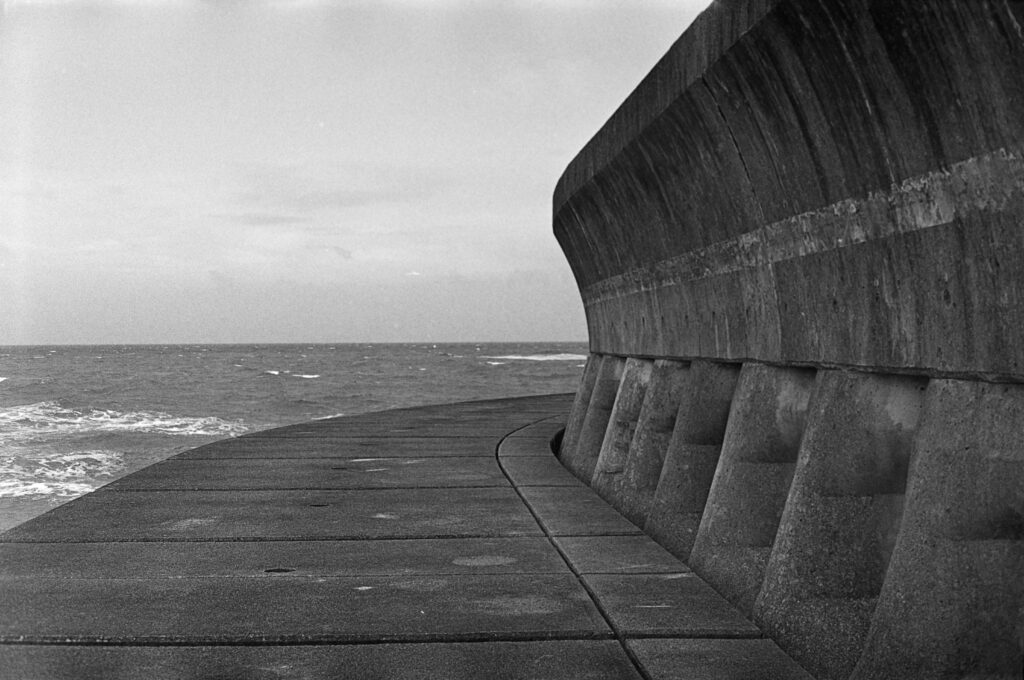
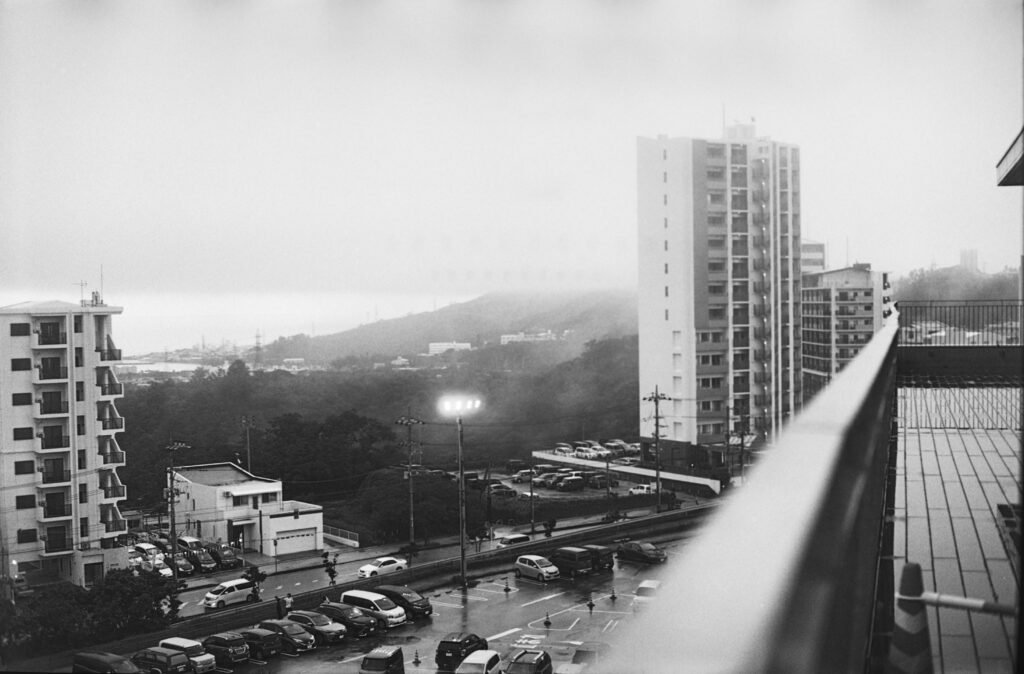
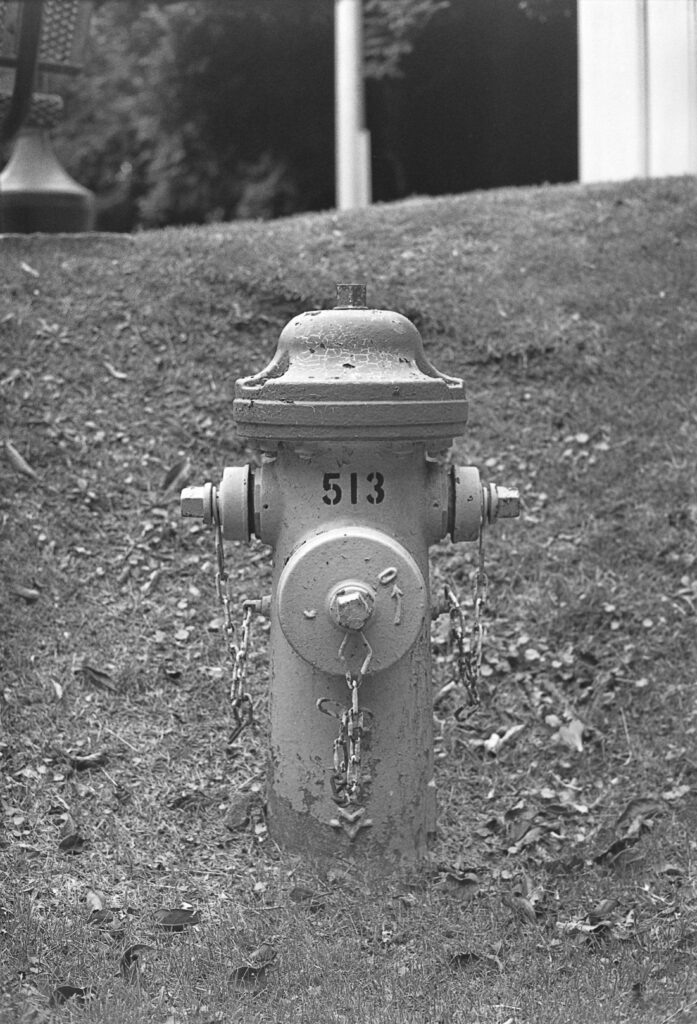
The fire hydrant photo sold me on this camera and its 50mm f/1.8. Part of me is always “holding back” with rangefinders – I always find myself stopping down to give myself a bit more in-focus area because I don’t have the same confidence in rangefinder focusing compared to the through-the-lens microprism view from my Nikons. But it appears to be dead on, and sharp enough in the center. I also find the out-of-focus background pleasantly smooth.
A few months later, now back in the American heartland, I managed to shoot another roll through the Konica IIIM – this time with Kentmere 400 pushed to 1600 because I’d be starting out shooting handheld… in a cave.
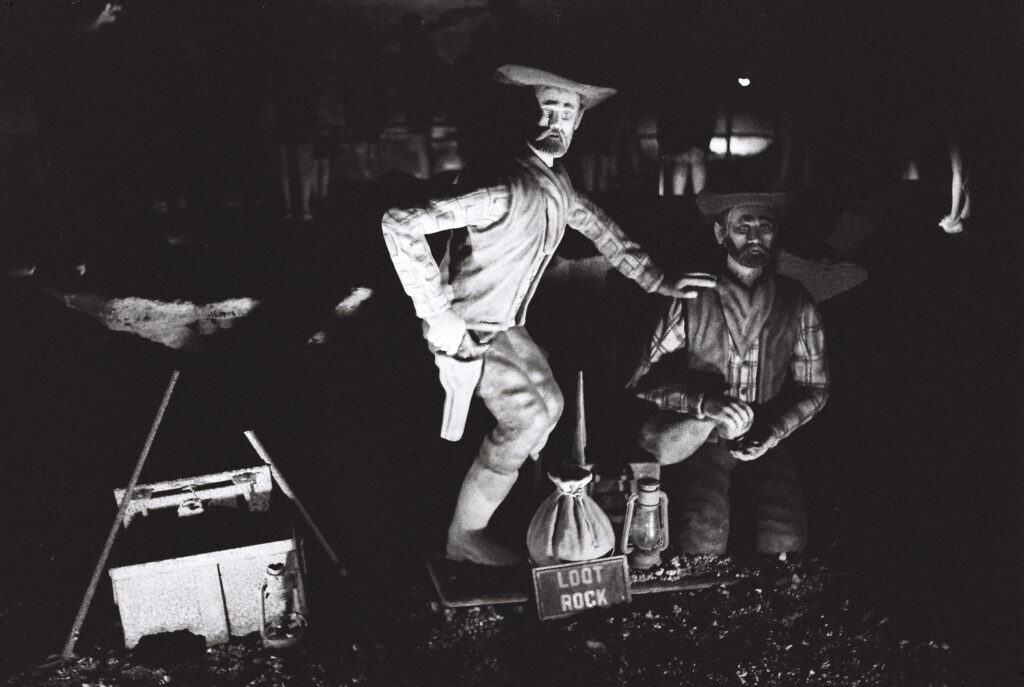
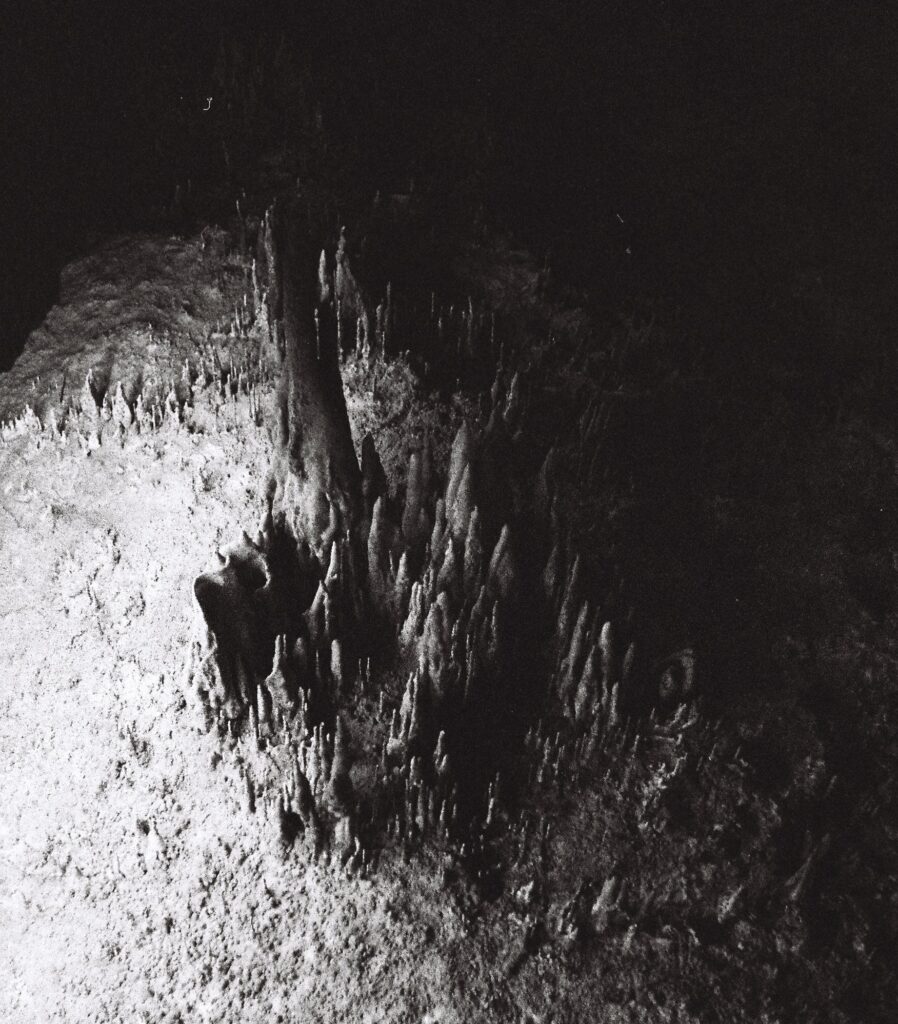
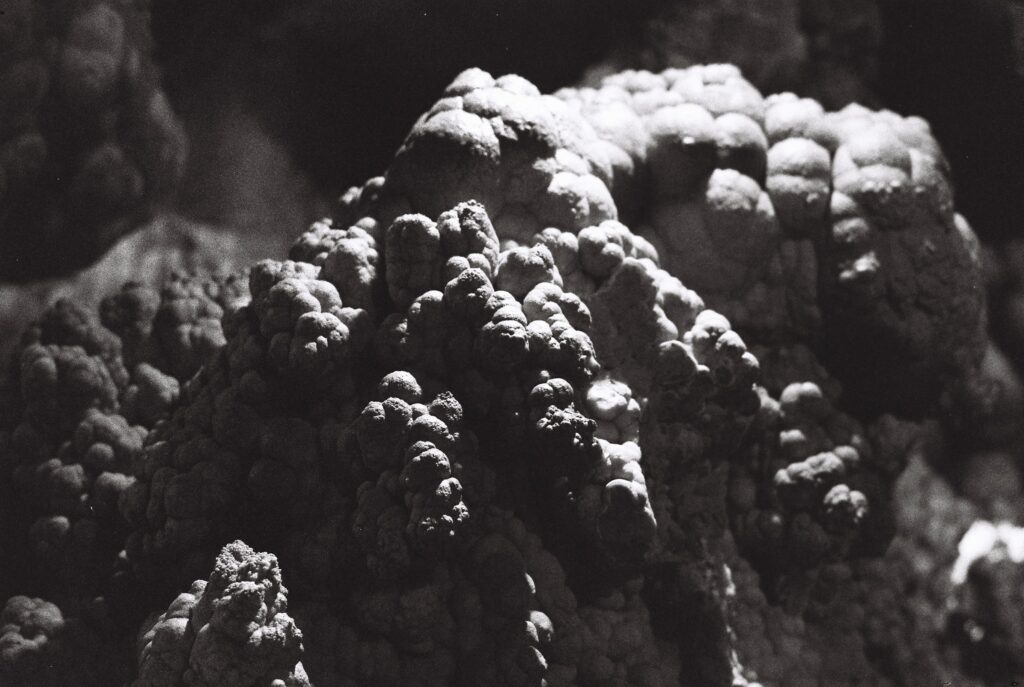
Caves are hard to shoot. Without light, it was challenging to know exactly what my settings were (the aperture ring being unclicked was not helpful!). Using the rangefinder was also challenging, especially wide open – but possible.
With a bit of the +2 push roll left over to be used above ground, a bit of early morning fog proved cooperative (if you like grain):
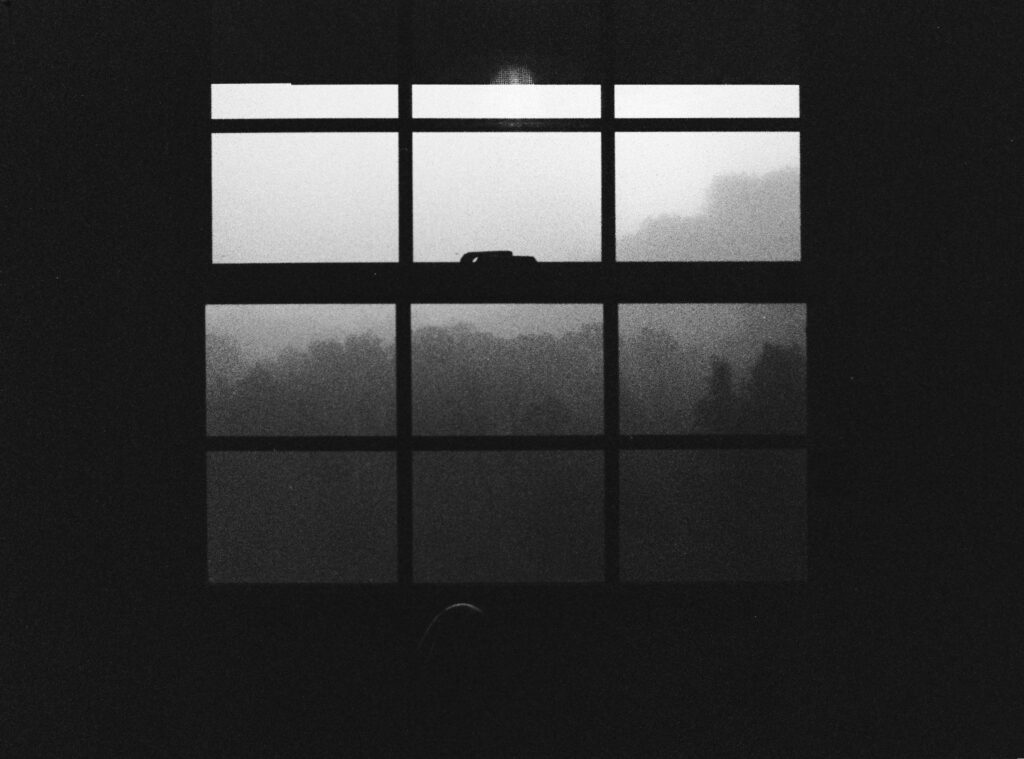
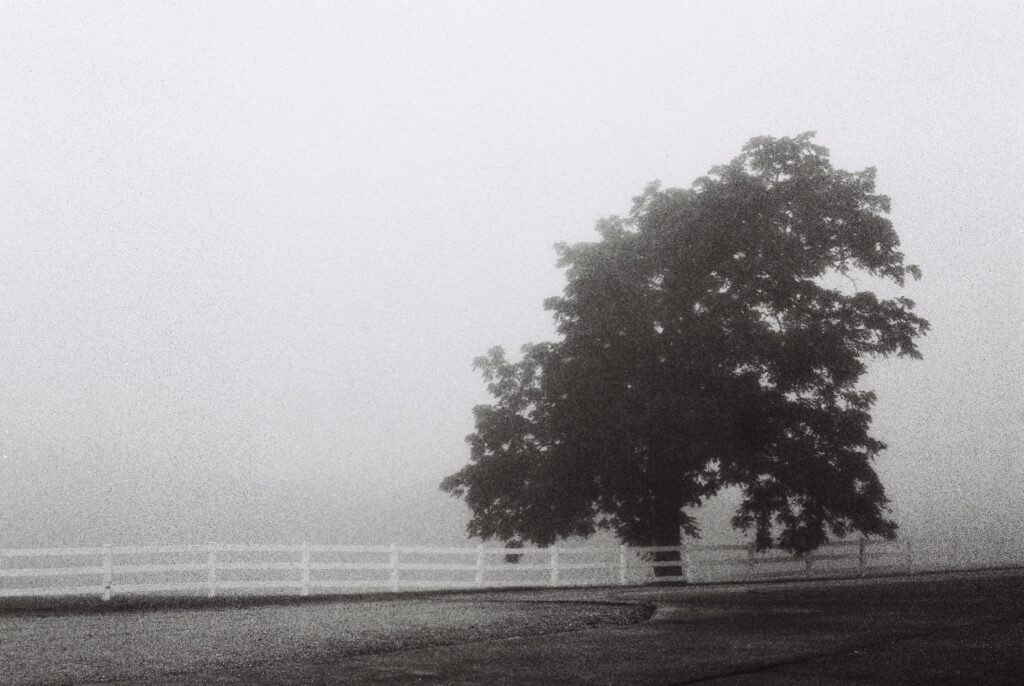
Final thoughts – I like it. 50mm is one of my favorite focal lengths, and not being tempted to change lenses means I spend more time thinking about how to get the shot I want. It’s a good camera for incidental shooting – hang this around your neck and don’t worry about shoving lenses in your pockets or carrying a bag. The rangefinder experience is also a lot of fun and a nice occasional change from the SLRs that I’m used to.
The Konica IIIM/A might be some of the finest examples of non-Leica premium rangefinders. I think they compete well against the Canon 7/Canon P, as there is really no competition between the two when it comes to the viewfinder (the Konica IIIA/M blows Canon out of the park). In terms of durability, the Konica’s fixed lens and absolutely rock-solid body with a leaf shutter instead of the steel curtains might be another point in its favor.
Also, if half-frame cameras are interesting to you – the ability to switch between full and half frame modes (albeit not mid-roll) is a pretty impressive capability, but requires the very specifically shaped mask which I have not been able to find on eBay yet (and appears to be missing from most IIIM versions). When I have access to a 3d printer that may prove to be a possible solution, but it will take some trial and error to reverse-engineer the specific dimensions needed.
I have heard of the film advance lever becoming jammed or of issues with the leaf shutter in other examples (buying 70-year old precision clockwork does tend to be something of a toss up at times) but I will use and enjoy my example while I can.
For more about these cameras, I recommend reading this well researched page: dantestella.com/technical/koni3.html
For a review of the earlier Konica III by a much better photographer: johnnymartyr.wordpress.com/2017/07/03/behold-the-konica-iii/
Share this post:
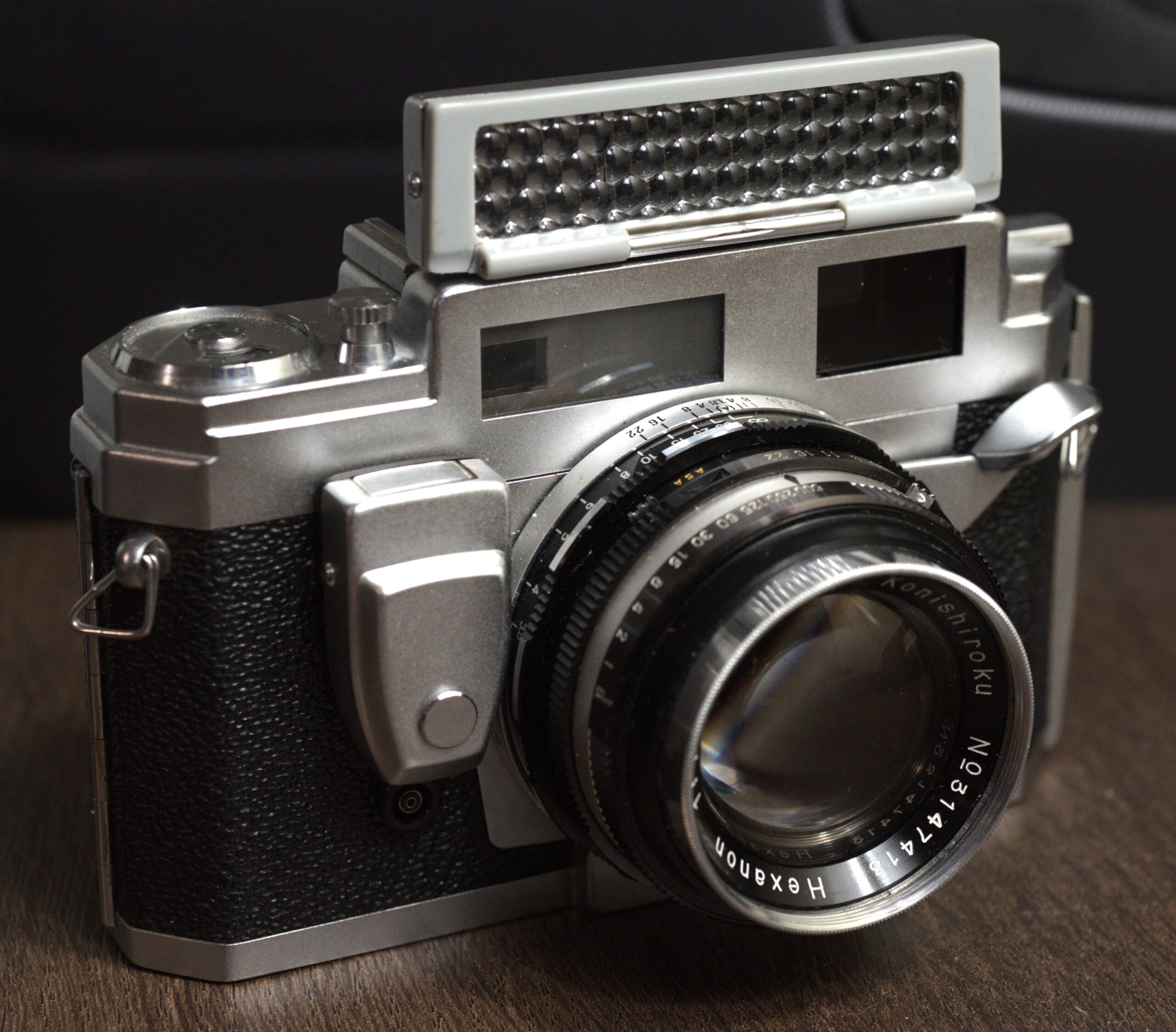
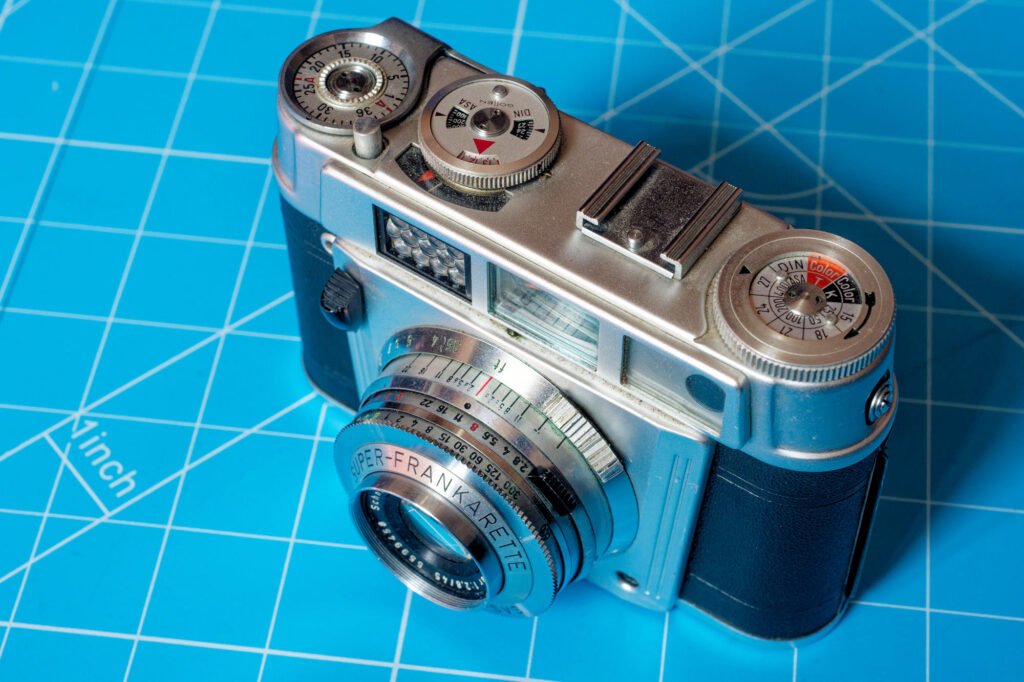
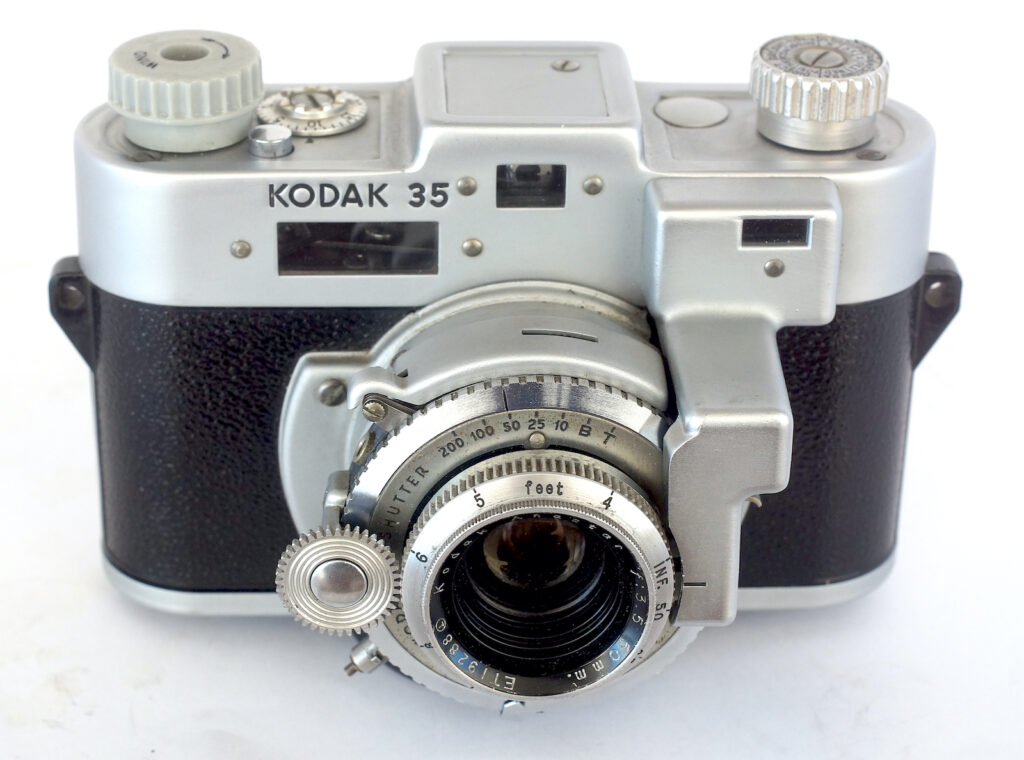
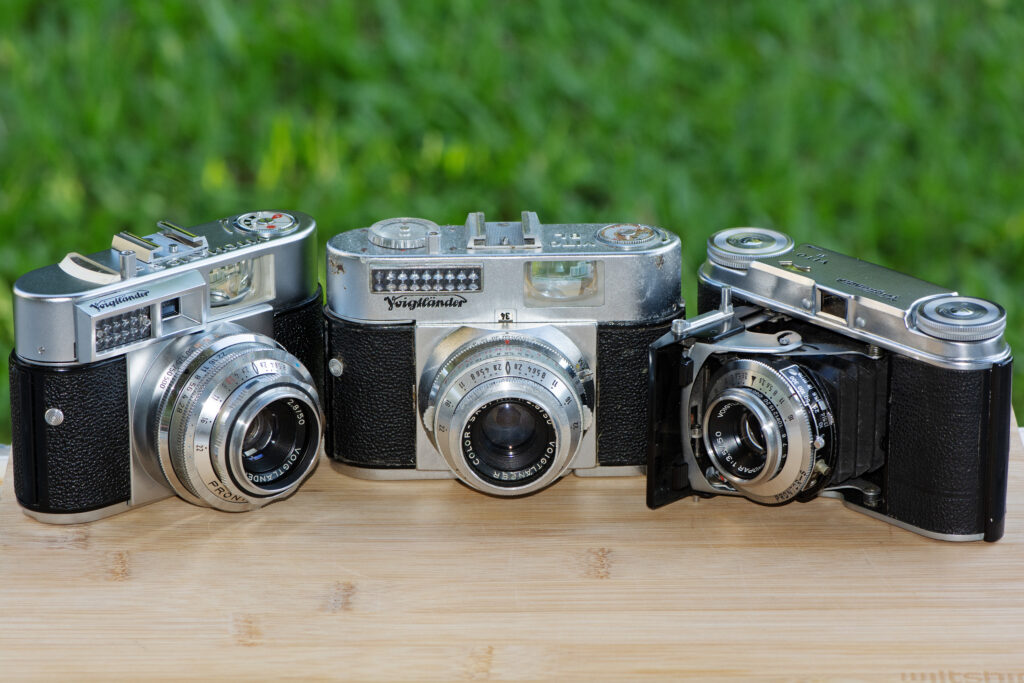
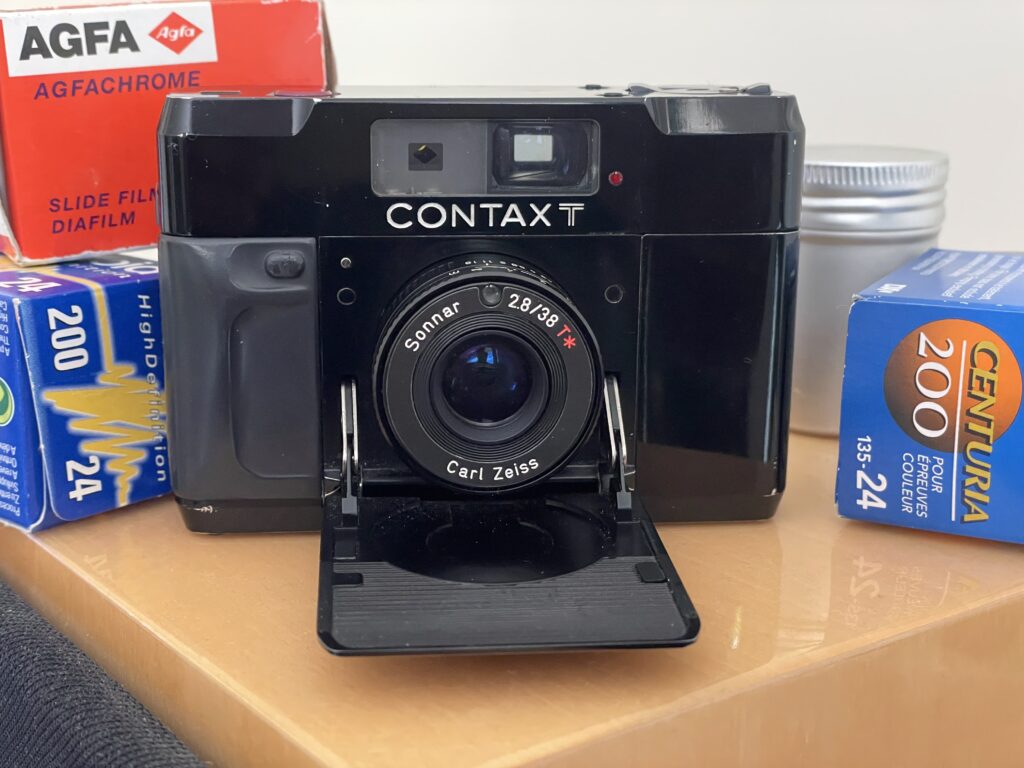




Comments
Michael Zwicky-Ross on Konica IIIM – Caves, Fog, and Review
Comment posted: 21/10/2024
Bob Janes on Konica IIIM – Caves, Fog, and Review
Comment posted: 21/10/2024
Keith Drysdale on Konica IIIM – Caves, Fog, and Review
Comment posted: 21/10/2024
Jeffery Luhn on Konica IIIM – Caves, Fog, and Review
Comment posted: 21/10/2024
Thanks for introducing me to the Konica III. I've never seen one in real life. You piqued my interest and I viewed several videos about it. The styling is attractive! It's a collector's dream. I like your two fog shots the best. Nice compositions!
Comment posted: 21/10/2024
Gary Smith on Konica IIIM – Caves, Fog, and Review
Comment posted: 21/10/2024
Comment posted: 21/10/2024
Paul Quellin on Konica IIIM – Caves, Fog, and Review
Comment posted: 21/10/2024
Comment posted: 21/10/2024